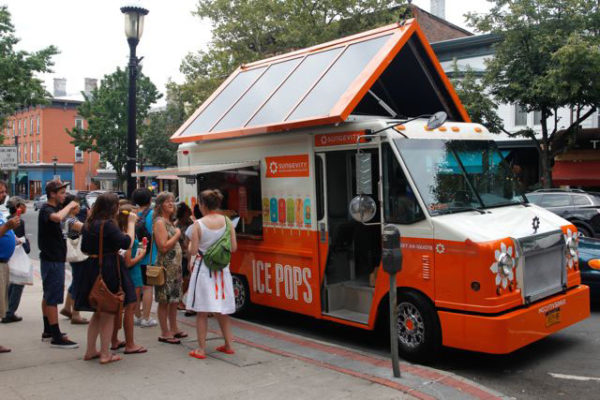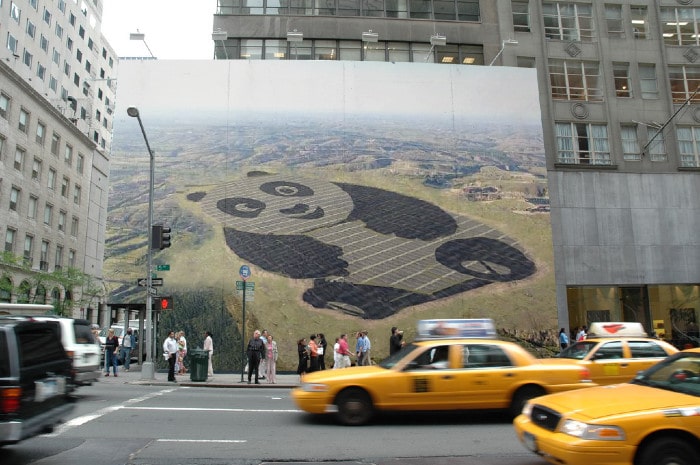by Tor “Solar Fred” Valenza
 It’s been an international media sensation, but just in case you somehow missed it, Google “panda solar farm,” and you’ll see 16,600 news stories about a giant panda-shaped solar installation in China. I’m not just talking about the trade media either. The U.S. mainstream media simply adored this solar story, generating articles in the Washington Post, Mashable, Fox News and elsewhere.
It’s been an international media sensation, but just in case you somehow missed it, Google “panda solar farm,” and you’ll see 16,600 news stories about a giant panda-shaped solar installation in China. I’m not just talking about the trade media either. The U.S. mainstream media simply adored this solar story, generating articles in the Washington Post, Mashable, Fox News and elsewhere.
The international attention garnered for solar and for project builder Panda Green Energy was inarguably a spectacular media success. But before you go designing your first 50 MW puppy dog or kitten solar project, let’s understand how this news attracted so much media attention and then dive into some solar marketing and PR takeaways for your company.
Where the panda-shaped solar idea came from
You might think that this brilliant media coup came from a clever Chinese public relations agency, but no. In fact, according to the South China Morning Post, the idea came from Ada Li Yan-tung, an inspired Hong-Kong teenager who goes to high school in Portland, Oregon. She reportedly unveiled her idea at a United Nations youth climate conference in Paris in front of Al Gore and U.N. Secretary-General Ban Ki-moon, who facilitated getting Panda Green Energy on board.
Suggesting an idea is one thing, but credit must be given to Panda Green Energy for embracing a teenager’s fantastical idea and making it a reality.
Why did this creatively shaped solar project get attention?
While a panda-shaped solar project is unique, it’s not the first time that engineers have designed a solar project in a thematic shape. Here’s a heart-shaped solar project in France. You might recall Walt Disney World’s Mickey Mouse-shaped solar installation in Florida, and let’s not forget Panasonic’s (formerly Sanyo’s) Solar Ark. These creative solar projects attracted media attention after completion, and the panda solar farm probably received even more attention because of the U.N. connection, but also because of its cuddly appearance.
Despite this international success, I’m not advocating that solar developers and EPCs convince their project owner and utility clients to create a series of arrays shaped like a dog, cat, bear cub, sunglasses or wine bottle. Not only will these projects be more expensive to design and procure, they could also become too commonplace.
What I am suggesting is that once a year, consider doing some kind of guerrilla marketing stunt that makes the press and the public notice your company and show how solar is changing the world. Here are some tips:
Tip 1: Don’t just make it a stunt. Say something.
This entire Panda solar project was designed to bring attention to sustainability. While it was cute and relevant to the Panda Green Energy brand, there is a reasoning behind what the company did. Bring attention to energy independence or clean energy or that solar is “free.” Whatever your message, it’s best to have some kind of advocacy angle, not a 2 solar panel for one sale. You’ll still gain brand awareness and publicity, so there’s still a business benefit too.
Tip 2: Build something cool and solar powered.
Sure, you could make a fun video, but wouldn’t it be even better to make something that’s solar-and-storage powered?
 One of my favorite examples of this type of guerrilla marketing stunt was Sungevity’s solar-powered popsicle truck. The company installed a solar system on top of an old ice cream truck to power the onboard freezer, and then handed out free popsicles to people on the street in the target markets. Naturally, there were marketing materials distributed too. But it was great fun and people talked about the promotion—and the solar-powered truck.
One of my favorite examples of this type of guerrilla marketing stunt was Sungevity’s solar-powered popsicle truck. The company installed a solar system on top of an old ice cream truck to power the onboard freezer, and then handed out free popsicles to people on the street in the target markets. Naturally, there were marketing materials distributed too. But it was great fun and people talked about the promotion—and the solar-powered truck.
What can your team build that is solar-powered and cool? Can you do a spin on a flash mob that’s solar and battery related? Can you use your product in an unusual (but safe) way? Think Rube Goldberg and if possible, make it more whimsical than practical. You might also want to partner with another brand or technology. Truly, you’re only limited by laws, physics, budget—and your imagination.
Tip 3: Make it a public spectacle.
Once you’ve built your solar thingy, find a public spot to demonstrate it. You may need a permit of some sort for your town or city, but ideally, do the demo in public and alert the media that it’s happening. Naturally, you can also present your solar idea at a trade show, but that’s going to have limited public and press engagement.
Tip 4: Film it.
Whatever you do when you make your contraption public, film it. This way, even if your solar thingamabob only works once, you’ll always have something to share with your customers, the media and social media. Make sure you get people’s reactions. Capturing a look of genuine amazement or delight on a child’s or grandma’s face can often help a video go viral.
Let me emphasize that I love the Panda Power Plant. It’s a positive image for solar, and keeps solar in the public’s imagination. But don’t copy the idea—come up with your own. Create something that’s fun and that will get people excited about solar power and talking to their friends and family about the stunt on Facebook.
Tor “Solar Fred” Valenza is senior strategy adviser for Kiterocket’s renewable energy practice and a communications consultant for other solar and renewables brands.
The views and opinions expressed in this article are the author’s own, and do not necessarily reflect those held by pv magazine.
This content is protected by copyright and may not be reused. If you want to cooperate with us and would like to reuse some of our content, please contact: editors@pv-magazine.com.








By submitting this form you agree to pv magazine using your data for the purposes of publishing your comment.
Your personal data will only be disclosed or otherwise transmitted to third parties for the purposes of spam filtering or if this is necessary for technical maintenance of the website. Any other transfer to third parties will not take place unless this is justified on the basis of applicable data protection regulations or if pv magazine is legally obliged to do so.
You may revoke this consent at any time with effect for the future, in which case your personal data will be deleted immediately. Otherwise, your data will be deleted if pv magazine has processed your request or the purpose of data storage is fulfilled.
Further information on data privacy can be found in our Data Protection Policy.